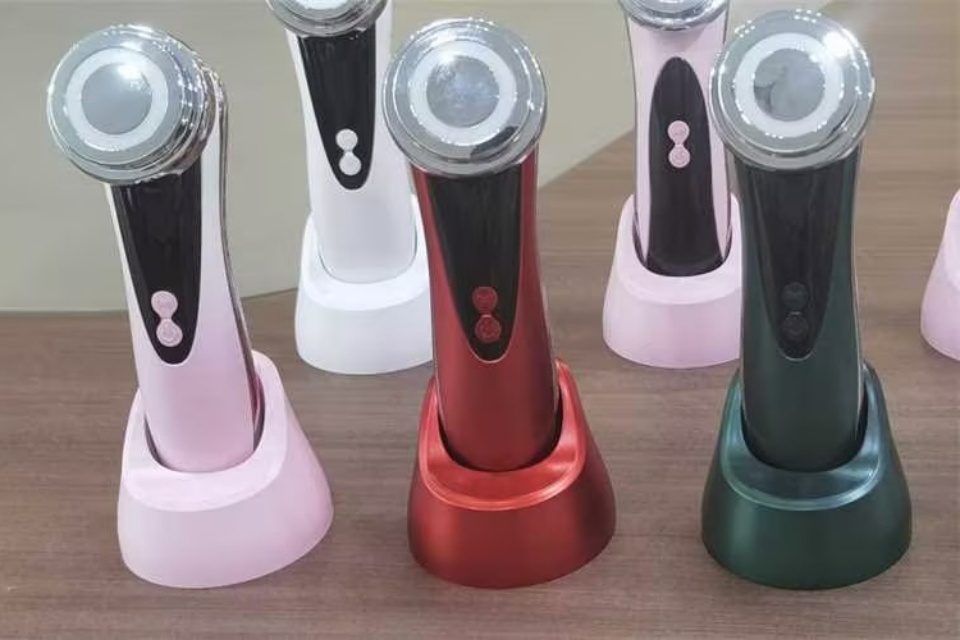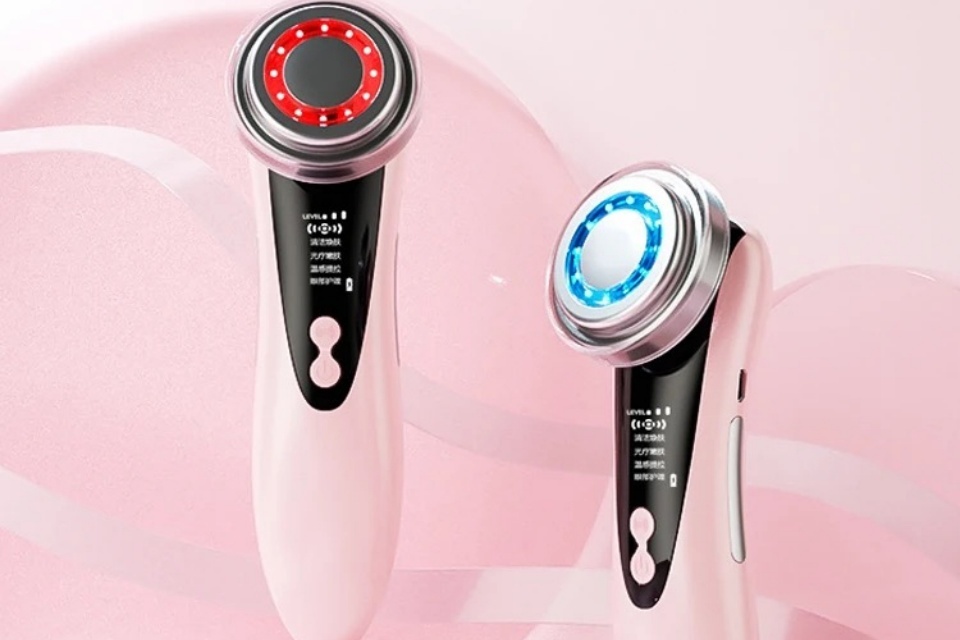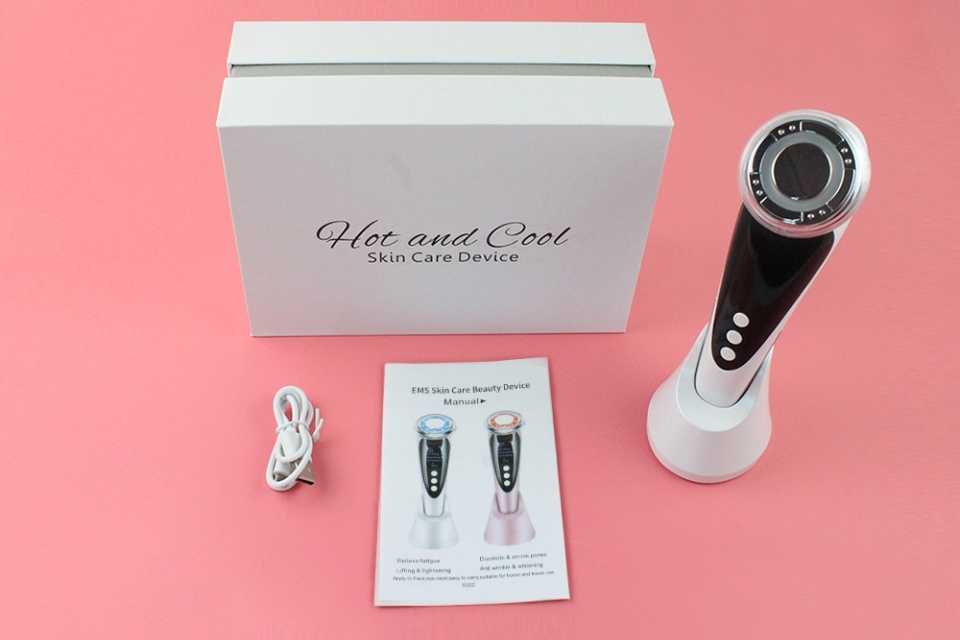Pairing Ice Compress Devices With Galvanic Bars
Summary
Pairing Ice Compress Devices with Galvanic Bars is a therapeutic approach that integrates cryotherapy and electrical stimulation to enhance recovery outcomes in both sports and clinical settings. This method combines the cooling effects of ice compresses, which reduce inflammation and pain, with the muscle-stimulating properties of galvanic bars that promote blood flow and tissue healing. The combined use of these modalities aims to optimize recovery processes, reduce muscle soreness, and improve overall athletic performance, making it a noteworthy subject within sports medicine and rehabilitation.
The significance of this pairing lies in its ability to address both acute injuries and chronic pain management effectively. Ice compress devices function through cryotherapy, inducing vasoconstriction to alleviate swelling and discomfort, while galvanic bars apply low-level electrical currents that stimulate muscle contractions and enhance circulation. This synergistic approach not only expedites recovery but also aids in injury prevention by strengthening muscles and improving endurance. As athletes and rehabilitation professionals seek efficient methods to optimize recovery, the integration of these technologies reflects an evolving landscape in therapeutic practices.
Notably, the application of ice compress devices paired with galvanic bars has raised discussions regarding the evidence supporting their efficacy and safety. Critics have highlighted the need for robust clinical trials to establish definitive outcomes, particularly concerning the long-term effects and potential risks associated with combined therapies. Studies on this topic are ongoing, aiming to clarify the benefits versus harms of these treatment modalities and to validate their clinical relevance in diverse populations.
In summary, the pairing of ice compress devices with galvanic bars represents a promising advancement in rehabilitation techniques, offering a multifaceted approach to pain management and recovery. Its growing adoption in both sports and clinical environments underscores its potential to enhance patient outcomes while inviting continued research into its efficacy and safety.
History
The use of galvanism and electrotherapy has a rich history that dates back to the early 19th century, significantly influenced by pioneering scientists and evolving technologies. One of the pivotal figures in this field was Alexander von Humboldt, who played a crucial role in advancing the understanding of animal electricity and galvanism. Humboldt's interactions with contemporaries like Alessandro Volta in the early 1800s helped transition the scientific community from a galvanic framework to a more comprehensive electrical perspective regarding nerve and muscle physiology.
As the understanding of electrotherapy developed, particularly in the mid-19th century, galvanic stimulation emerged as a prominent treatment method. This period marked a resurgence of interest in electrotherapeutics, catalyzed by the work of figures such as Guillaume-Benjamin-Amand Duchenne de Boulogne and Robert Remak, who demonstrated the therapeutic potential of electrical stimulation for various neurological conditions. The integration of galvanic techniques into medical practice gained traction, with electrotherapeutic devices becoming increasingly popular for treating a range of ailments.
In parallel, advancements in device technology were made, notably in the improvement of galvanic batteries. Polish nobleman Alexander Sapieha collaborated with leading European scientists to enhance the technical capabilities of these batteries, facilitating the application of galvanism in therapeutic contexts. This collaborative effort underscored the importance of international scientific exchange in driving innovations in electrotherapy.
The combination of galvanic stimulation with modern therapeutic modalities, such as ice compress devices, is a reflection of the ongoing evolution of treatment strategies aimed at pain management and rehabilitation. Today, techniques such as neuromuscular electrical stimulation (NMES) and functional electrical stimulation (FES) are utilized alongside other modalities, highlighting the synergistic potential of combining different therapeutic approaches to improve patient outcomes.
Mechanism of Action
The pairing of ice compress devices with galvanic bars combines two therapeutic modalities to enhance recovery and treatment outcomes. The ice compress provides cryotherapy, which serves to lower tissue temperature, thereby inducing vasoconstriction and reducing blood flow to the affected area. This reduction in temperature can lead to significant analgesic effects, minimizing pain and inflammation post-injury by numbing the affected area and reducing local metabolism.
Cryotherapy Effects
Cryotherapy operates primarily through its cooling effects, which have been shown to alleviate pain and reduce swelling in acute injuries such as sprains or bruises. By lowering skin temperature below 13.6 °C, significant cutaneous analgesia occurs, while nerve conduction velocity decreases by 10% at temperatures below 12.5 °C. Additionally, the inflammatory response is managed by restricting blood flow and fluid accumulation in injured tissues, thereby aiding in the reduction of inflammation and promoting faster recovery.
Galvanic Bar Functionality
Galvanic bars utilize electrical stimulation to enhance the therapeutic effects of cryotherapy. They deliver low-level electrical currents to the affected area, which stimulates blood flow and enhances tissue activity, thus promoting healing after soft tissue injuries or surgical procedures. This electrical stimulation can facilitate muscle contractions, improve strength and muscle control, and reduce muscle spasms through neuromuscular electrical stimulation (NMES) techniques. The application of these electrical signals can also help to target and deliver active agents, such as therapeutic compounds, directly into the pilosebaceous unit of the skin, further augmenting treatment efficacy.
Combined Effects
When ice compress therapy is combined with galvanic stimulation, the cooling effects can enhance the analgesic properties of the electrical stimulation while the galvanic bars promote increased circulation and tissue activity, potentially leading to improved healing outcomes. The interaction between cryotherapy and electrical stimulation is thought to optimize the inflammatory response, allowing for necessary biological healing processes to occur while managing pain effectively. This synergistic approach provides a multifaceted treatment strategy, addressing both immediate injury management and longer-term recovery needs.
Applications
The combination of ice compress devices with galvanic bars offers various applications in therapeutic and sports recovery settings. This integration is particularly beneficial for enhancing muscle recovery and injury prevention in athletes.
Sports Injury Recovery
Ice compress devices are traditionally used to reduce swelling and pain following sports injuries. When paired with galvanic bars, which provide electrical stimulation, this combination can significantly expedite recovery. The electrical impulses from galvanic bars stimulate muscle tissue, increasing blood flow and promoting faster healing by delivering oxygen and nutrients to the affected areas. The use of ice also helps manage inflammation, creating a synergistic effect that enhances overall recovery outcomes.
Muscle Strengthening and Endurance
Galvanic bars are effective in strengthening weak muscles through controlled electrical impulses, which promote muscle contractions. When used in conjunction with ice compress devices, athletes can experience improved muscular endurance and reduced fatigue during workouts. The combined application allows for a focused recovery strategy that prepares athletes for higher performance levels. This method not only aids in healing but also enhances muscle coordination and flexibility, essential for athletic performance.
Injury Prevention
Regular use of ice compress devices and galvanic bars as part of an athlete's training regimen can contribute to injury prevention. The electrical stimulation enhances muscle strength, thereby reducing the risk of injuries during intense physical activity. Furthermore, the application of cold therapy minimizes acute inflammation, which can lead to chronic injuries if not properly managed. This proactive approach to sports medicine emphasizes the importance of maintaining muscle health and preventing setbacks in training.
Mental and Physical Recovery
The application of this technology extends beyond physical benefits. Electrical stimulation, combined with cold therapy, has been noted to improve overall wellness, contributing to better mental focus and recovery from intense workouts. This holistic approach aids in the mental aspects of training, as athletes can recover more effectively and maintain higher performance levels with reduced fatigue and soreness.
Advantages
Pairing ice compress devices with galvanic bars offers several benefits that enhance recovery and improve overall health outcomes for athletes and patients.
Enhanced Recovery
The combination of cryotherapy and compression techniques, such as those offered by ice compress devices and galvanic bars, has been shown to promote tissue repair and reduce recovery time following muscle-damaging exercises. Cryocompression facilitates faster recovery kinetics and alleviates muscle damage, which is particularly beneficial for athletes experiencing delayed onset muscle soreness (DOMS). Studies have demonstrated that using cryocompression can significantly lower pain levels and muscle soreness, especially 48 hours post-exercise, contributing to improved performance metrics.
Effective Pain Management
Cryotherapy effectively numbs the affected area, reducing pain and swelling, while compression therapy stabilizes the injury site, further alleviating discomfort. This dual approach is particularly advantageous during the acute phase of healing, where reducing inflammation is crucial for recovery. The combined use of ice and galvanic stimulation can provide a synergistic effect, allowing patients and athletes to experience pain relief and improved joint flexibility more rapidly.
Reduced Inflammation and Edema
The inflammatory response is vital for the healing process, but excessive inflammation can hinder recovery. Ice compress devices help control swelling and inflammation, while galvanic bars may enhance circulation and promote the body's natural healing mechanisms. Together, these modalities can balance the inflammatory response, ensuring that tissue repair progresses without unnecessary delays.
Improved Performance Metrics
Research indicates that athletes using cryocompression techniques exhibit improved performance in metrics such as maximal voluntary contraction (MVC) and counter movement jumps. By integrating galvanic bars, which may enhance muscular performance and recovery, athletes can maximize their training outcomes while minimizing downtime from injuries.
Versatility in Application
Ice compress devices paired with galvanic bars can be applied in various clinical and athletic settings, making them versatile tools for rehabilitation. Their utility extends beyond sports injuries to include post-operative recovery and chronic pain management, demonstrating significant effectiveness in reducing edema and improving mobility in various patient populations.
Risks and Considerations
Introduction to Risks
The use of ice compress devices, particularly when paired with galvanic bars, presents several potential risks and considerations that must be addressed to ensure patient safety and efficacy. Understanding these risks is crucial for healthcare providers and patients alike when opting for these therapeutic technologies.
Evidence Quality and Relevance
To determine the appropriateness of ice compress devices, it is essential to evaluate the quality and credibility of the evidence supporting their use. Studies should represent relevant clinical applications and compare the technology against effective alternatives within a comparable population. For instance, evidence reviews must focus on whether the technology genuinely improves net health outcomes, which are defined as benefits versus harms, including factors like length of life and quality of life. If studies lack robust design or suffer from biases, their findings may mislead clinical decisions.
Limitations in Study Design
Several limitations in study design could affect the interpretation of evidence surrounding the use of ice compress devices. For instance, inadequate randomization, lack of allocation concealment, and absence of blinding could lead to selection bias and influence outcome assessment. Moreover, the presence of selective reporting and publication bias can significantly distort the perceived effectiveness of such devices. It is critical to consider these limitations when analyzing the clinical effectiveness and safety of ice compress technology.
Long-Term Effects and Adverse Events
Current randomized controlled trials often do not adequately capture the long-term effects or less common adverse events associated with the use of ice compress devices in conjunction with galvanic bars. Therefore, single-arm studies that include longer follow-up durations and larger populations may provide additional insights into the safety profiles of these devices. Understanding the potential for delayed or cumulative adverse effects is essential for both clinicians and patients.
Clinical Outcome Measures
The choice of validated outcome measures is crucial in assessing the impact of ice compress devices. These measures must effectively capture clinically significant differences in health outcomes. If key health outcomes are not addressed or if surrogate measures are used without proper validation, the clinical relevance of findings may be diminished. Healthcare providers should prioritize studies that utilize established and validated measurements to ensure that the results are meaningful and applicable to patient care.
Regulatory Considerations
Guidelines and position statements from professional organizations, such as the American Academy of Orthopaedic Surgeons, are important resources when evaluating the safety and efficacy of ice compress devices. As of 2022, these guidelines have not modified previous recommendations regarding specific therapeutic technologies, indicating a need for ongoing review and potential revision based on new evidence. Therefore, staying informed about updates from credible sources can help clinicians make informed decisions regarding the use of such devices in practice.
Research and Studies
Overview of Clinical Trials
Recent studies have focused on the efficacy of various therapeutic interventions in physical rehabilitation. One notable research trial investigated the effects of neurocryostimulation (NCS) compared to traditional ice application in patients undergoing physiotherapy for acute lateral ankle sprains (LAS). This randomized clinical trial was designed to evaluate functional recovery, pain reduction, edema management, and improvement in ankle dorsiflexion range of motion (ROM).
Objectives and Hypotheses
The primary objective of the study was to determine whether participants receiving NCS treatment would exhibit more significant improvements in recovery metrics compared to those treated with conventional ice methods. The hypothesis posited that the NCS group would demonstrate a more rapid enhancement across all evaluated variables.
Study Registration and Methodology
The research trial was registered on ClinicalTrials.gov under the identifier NCT02945618, ensuring transparency and adherence to ethical standards in clinical research. The methodology involved a single-blind design to reduce bias and enhance the reliability of the results, focusing on quantifiable outcomes such as pain levels, swelling, and mobility.
Recommendations for Future Research
The findings of this study have prompted recommendations for further exploration into the comparative benefits of NCS versus traditional cryotherapy methods. Continued investigation into the therapeutic applications of such interventions could provide valuable insights into optimizing recovery protocols for sports injuries.
 English
English Español
Español Português
Português Pусский
Pусский Français
Français Deutsch
Deutsch 日本語
日本語 한국어
한국어 Italiano
Italiano عربى
عربى


